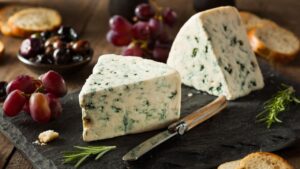Grass is a ubiquitous plant that covers much of the Earth’s surface. It is the primary food source for many herbivorous animals, but can humans eat it too? While most of us are familiar with grass as a lawn or a decorative plant, it turns out that some types of grass are actually edible and offer several health benefits. In this article, we will explore the edibility and nutritional value of grass, and answer the question, “Can you eat grass?”
Edibility of Grass
Not all types of grass are edible, but some have been used as a food source for centuries. For example, wheatgrass and barley grass are commonly consumed in the form of juices or powders. Other types of grass that are edible include ryegrass, fescue, and bermudagrass.
Can You Cook Grass and Eat It?
Yes, you can cook some types of grass and eat it. However, it is important to note that not all grass is safe to eat, and some may even be toxic. It is always best to consult with a knowledgeable source before consuming any type of grass.
What Does Edible Grass Taste Like?
The taste of edible grass varies depending on the type. For example, wheatgrass has a slightly sweet taste, while bermudagrass has a more bitter flavor. Some people describe the taste of edible grass as earthy or grassy.
Nutritional Value of Grass
Grass may not be the most obvious food choice, but it does offer several health benefits. Here are some of the key nutrients found in grass:
Does Grass Have Calories?
Yes, grass does contain calories. However, the exact number of calories will depend on the type of grass and how it is consumed. For example, one ounce of wheatgrass juice contains approximately 15 calories, while one ounce of bermudagrass contains around 7 calories.
Vitamins and Minerals Found in Grass
Grass is rich in several vitamins and minerals, including:
- Vitamin A
- Vitamin C
- Vitamin K
- Folate
- Potassium
- Magnesium
Health Benefits of Consuming Grass
Consuming grass can provide several health benefits, including:
- Reducing inflammation in the body
- Boosting the immune system
- Improving digestion
- Detoxifying the liver
- Lowering cholesterol levels
Comparison to Salad
Why Can We Eat Salad But Not Grass?
Salad greens, like lettuce and spinach, are closely related to grass and are part of the same plant family. However, salad greens have been cultivated for human consumption for thousands of years, while grass has not. Additionally, salad greens have been bred to have a milder flavor and a softer texture, making them easier to eat raw.
Nutritional Differences Between Salad and Grass
While both salad greens and grass offer several health benefits, there are some nutritional differences between them. Salad greens tend to be higher in vitamins A and C, while grass is higher in vitamin K. Salad greens are also higher in fiber and protein, while grass is lower in both of these nutrients. However, both salad greens and grass offer valuable nutrients and can be a part of a healthy diet.
Digestion of Grass
Can Your Body Digest Grass?
While some herbivorous animals, such as cows and horses, are able to digest grass due to their specialized digestive systems, humans do not have the same capacity to break down the tough cellulose found in grass. However, some types of grass can be fermented or juiced to make them easier to digest.
The Digestive System of Herbivores vs. Humans
Herbivorous animals have a specialized digestive system that is able to break down tough plant matter. For example, cows and horses have multiple stomachs that contain bacteria and other microbes that can break down the cellulose in grass. Humans, on the other hand, have a single stomach and do not have the same specialized enzymes that are required to digest cellulose.
Fermenting Grass for Better Digestion
Fermenting grass can help to break down some of the tough cellulose and make it easier to digest. Fermented grass is commonly consumed in the form of sauerkraut or kimchi, and can provide several health benefits, including improved digestion and a boost to the immune system.
Raw Leaves
Can Humans Digest Raw Leaves?
Raw leaves, like those found in salads, are generally easier for humans to digest than grass. This is because leaves are softer and contain less cellulose than grass. However, some types of raw leaves, like those from certain trees or plants, may be toxic and should not be consumed.
Nutritional Value of Raw Leaves
Raw leaves, like those found in salads, are a great source of vitamins, minerals, and fiber. Some of the key nutrients found in raw leaves include:
- Vitamin A
- Vitamin C
- Vitamin K
- Folate
- Potassium
- Magnesium
- Fiber
Benefits and Drawbacks of Consuming Raw Leaves
Consuming raw leaves, like those found in salads, can provide several health benefits, including improved digestion, reduced inflammation, and a boost to the immune system. However, raw leaves may also contain harmful bacteria, like E. coli or Salmonella, if they are not properly washed or stored. Additionally, some people may have difficulty digesting raw leaves, which can cause bloating or gas.
Culinary Uses of Grass
Grass in Traditional Cuisines
Grass has been used as a food source in many traditional cuisines around the world. For example, in Ethiopia, a type of grass called enset is used to make a starchy porridge. In Indonesia, a type of grass called cogon is used in a variety of dishes, including soups and curries.
Modern Culinary Uses of Grass
In recent years, grass has gained popularity in the culinary world as a nutritious and sustainable food source. Chefs are experimenting with using grass in a variety of dishes, including salads, smoothies, and even as a garnish for cocktails. Some popular types of grass used in modern cuisine include wheatgrass, barley grass, and alfalfa sprouts.
Cooking Grass
While grass is generally not consumed cooked, there are some culinary uses for cooked grass. For example, enset, the grass used in Ethiopian cuisine, is often cooked and then mashed into a porridge. Additionally, some types of grass can be used to make tea or other hot beverages.
Conclusion
While humans are not able to digest grass in the same way that herbivorous animals can, there are still ways to incorporate grass into a healthy and diverse diet. Fermenting grass can make it easier to digest, and some types of grass, like wheatgrass and barley grass, offer valuable nutrients and can be used in a variety of culinary applications.
Raw leaves, like those found in salads, offer many health benefits and are generally easier for humans to digest than grass. By incorporating both grass and raw leaves into your diet, you can ensure that you are getting a wide range of nutrients and enjoying a variety of flavors and textures.





